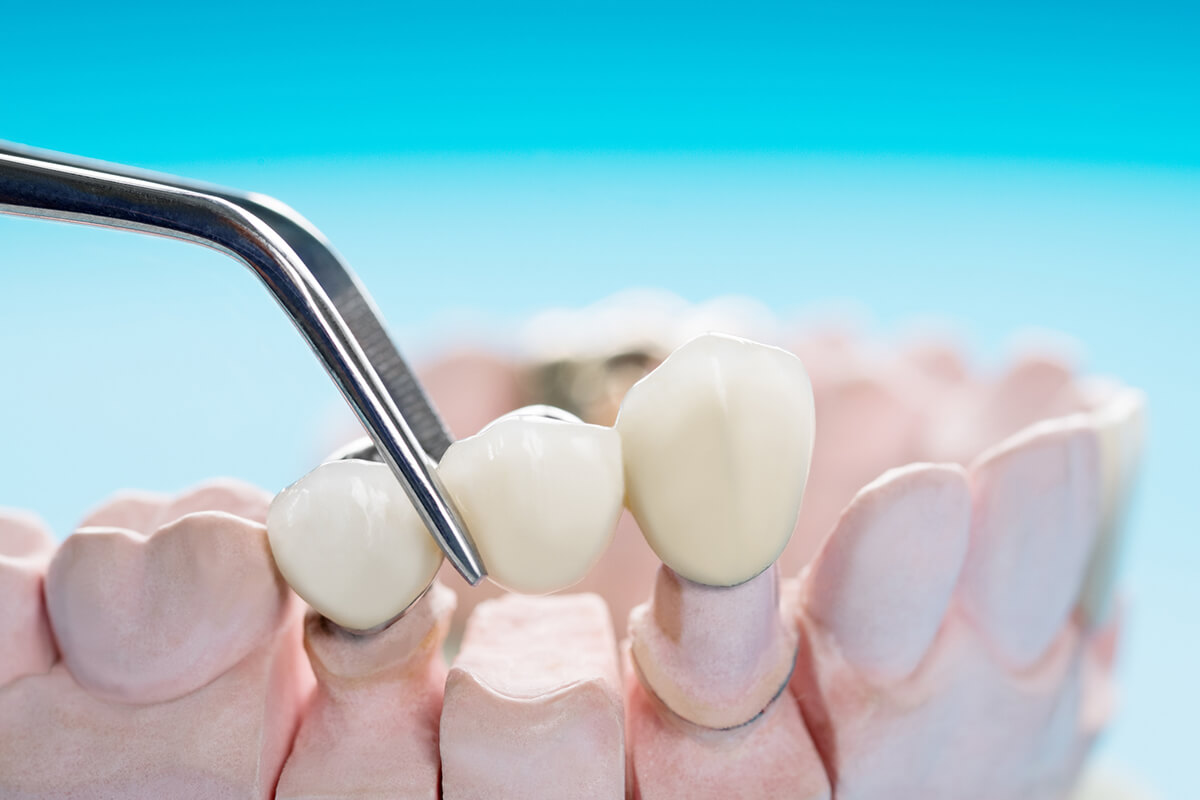Many people who are missing one or more teeth in a row have found a dental bridge to be a solid, functional choice for tooth replacement. Not only do they look natural and beautiful, but they often last a long time, too. Unfortunately, the day may come when the bridge needs to be removed. This could be due to damage, the presence of decay, a shift in your teeth, or it could simply be because it is loose.
What can you do when issues like these arise? Can a dental bridge be removed and recemented? Or will the entire bridge need to be replaced?
What is a Dental Bridge?
An empty space where a tooth once was can have a negative impact on the teeth around it. After all, they are missing support which, in turn, allows them to start to shift. Teeth that drift out of place can change your bite alignment, become crooked and crowded, leave gaps, and even cause pain. A dental bridge is used to prevent this.
So, what is a dental bridge? It is a dental permanent restoration that will replace one or more missing teeth using an artificial tooth/teeth placed between two natural teeth. Dental crowns are placed on the healthy teeth on either end for support and the artificial tooth/teeth will fill in the gap.
A dental bridge brings you both functional and cosmetic benefits.
Can a Dental Bridge Be Removed and Recemented?
Bridges are designed to last for many, many years - hence why they are bonded in place. So, when something goes wrong, there are rarely cases when the bridge can be removed and recemented. However, it can get replaced if the patient meets the necessary criteria.
The replacement of a dental bridge is done based on each patient’s situation. Depending on how the bridge failed and the stability of the support teeth, the dentist will determine the best approach to treatment.
Causes of Bridge Failure
A dental bridge is designed to last about 10 to 15 years - with a good dental hygiene routine it can last even longer. And while many people have had them in place successfully for many years without any issue, others encounter complications - leading a bridge to need to be removed. Here are a few of the most common reasons why this happens.
A poorly-fitted bridge.
If a bridge is designed with a loose or poor fit, it can lead to many different problems. A poor fit leaves teeth vulnerable to the build-up of bacteria and food particles which can lead to decay affecting the healthy support teeth. In this situation, the bridge would need to be assessed for replacement.
Damage to the bridge.
If any part of that makes up the bridge, a fracture, chipped, or cracked the bridge can be ruined in its entirety. Reducing consumption of hard food is recommended to patients with bridges. In some instances, the damage can be repaired while the bridge is still in.
Gum disease. Because a dental bridge is a dental appliance in your mouth, it requires a very good level of oral hygiene - including routine dental cleanings. Without these things, there is a greater risk of gum disease. This will likely need to be replaced.
Reduce any incident of failure when you have the highly-skilled Agnieszka Jamrozek, DMD handle your bridgework while also maintaining good oral hygiene. If you’d like to learn more, contact us at 973-728-3779 . Or, request an appointment online.
